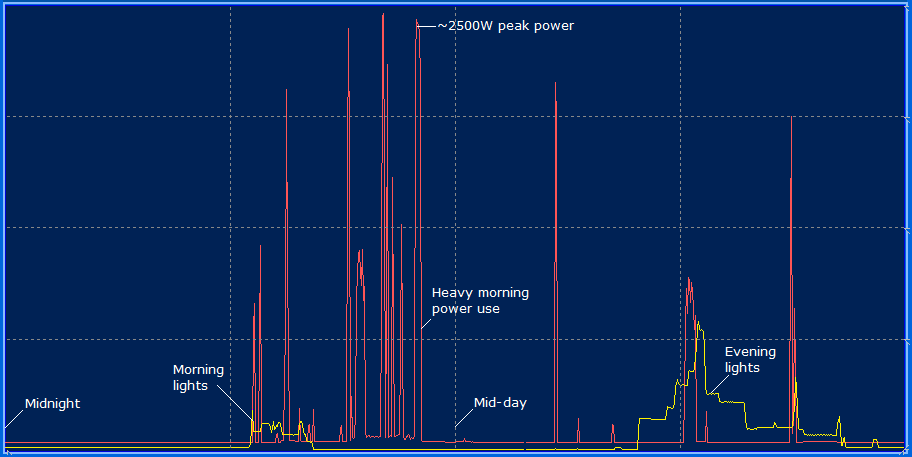Let's have some definitions first.
Electrical energy is the ability to do electrical work, such as to light a globe or cook your toast. Power deals with the rate of energy use. Putting all this in units that we want to talk about for costs (Australia), energy is measured in kilowatt hours (kWh) and power is measured in Watts (W), generally KiloWatts (kW) for one thousand Watts. An electrical device using power at 1kW for an hour uses 1kWh and will costs you (AUD2016)$0.25.
A practical example; making a cup of tea with an electric kettle. The kettle is 2000W, and it takes 3 minutes to boil. The cost is therefore 2000W * 3mins * $0.25 / 1000W / 60mins = 2.5 cents. Explanation: 2000W is the power the kettle uses, 3 minutes is how long the kettle is running for, 25 cents per kilowatt (1000W), per hour (60mins).
Makes sense?
So that's all there is to it, each device in your house has a power rating, and depending on how long you use it there is the corresponding cost. So, reduce the use of energy by switching things off. Sounds very straightforward, because it is. The best way to reduce your power cost is to use less power.
"But JAW, I have already trained my kids to turn the lights off as they leave a room!" Well done, you are doing better than me. But modern day lighting like compact flourescent and LEDs are very low power users. "So what's using my power?"
Check power ratings on your equipment, it must be printed somewhere by law - what's your big power users? Worst power users are clothes driers, heaters, air conditioners - because they have high power ratings *and* you tend to use them for long periods of time.
Buy yourself from ebay a power meter such as this one, they are very cheap at around (AUD2016)$20. Plug it in line with your equipment and it will show how many watts it is using. The power rating printed on equipment is the maximum power, the equipment generally does not use maximum power all the time. So how much power does your hifi use on standby? Now you know!
I took it further and built an energy monitoring system to track energy use throughout my house and really know what is going on. And the answer - wow, we use a lot of power and there isn't a lot of things we want to go without.
This is a trend of a power and a light circuit in my house, starting from midnight for 24 hours. Note that there is a constant draw on power (red) from devices permanently on or in standby. Lights (yellow) come on in the morning, and then in the evening but stay off during the day and middle of the night. During the morning there are big energy users - kettle, toast, washing machines which quietens down during the afternoon. Then some other stuff later on. The important observation is that most of the heavy energy use is during the day.
So I looked into solar PV, which is active during the day, and if it could save me money...









 database
database